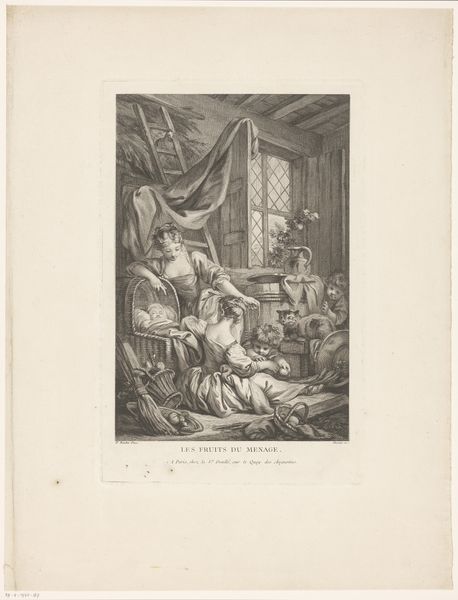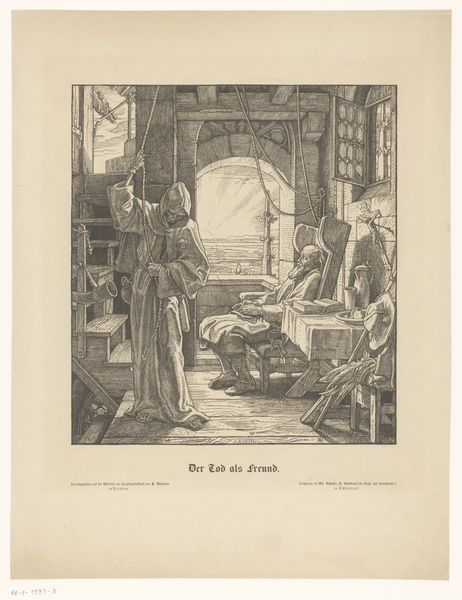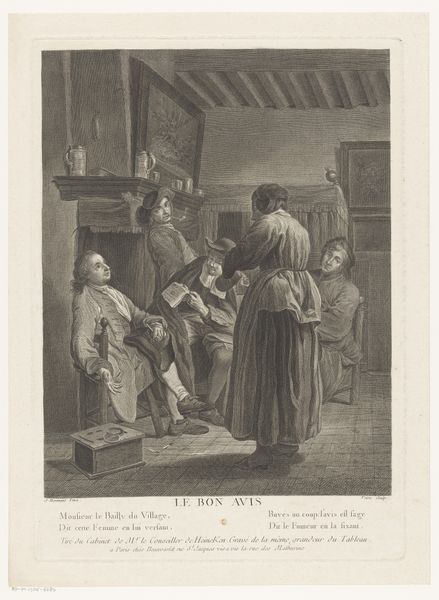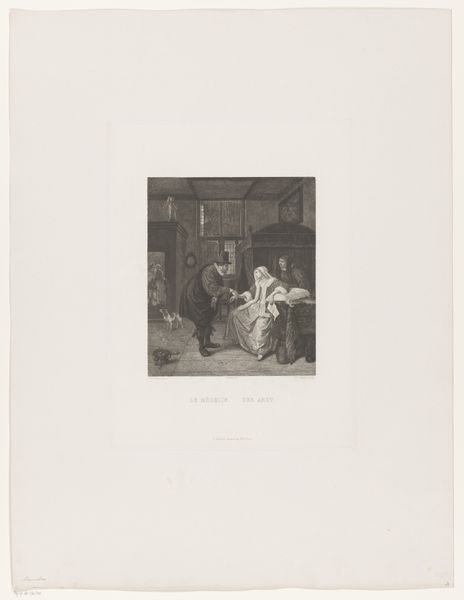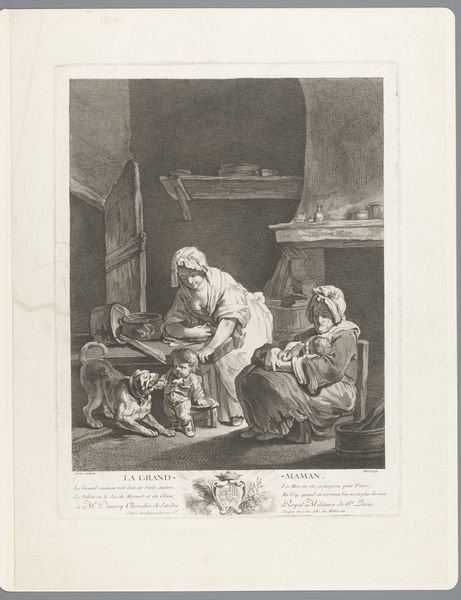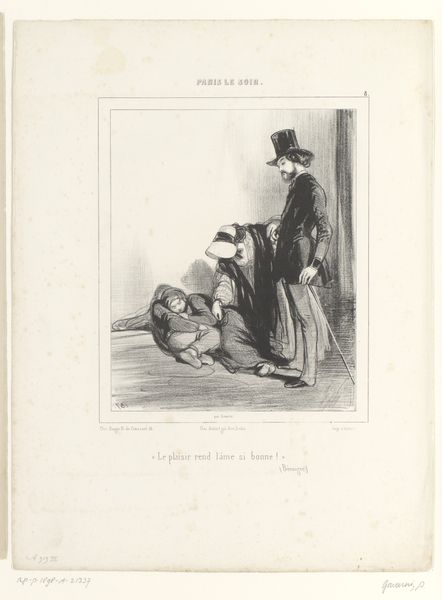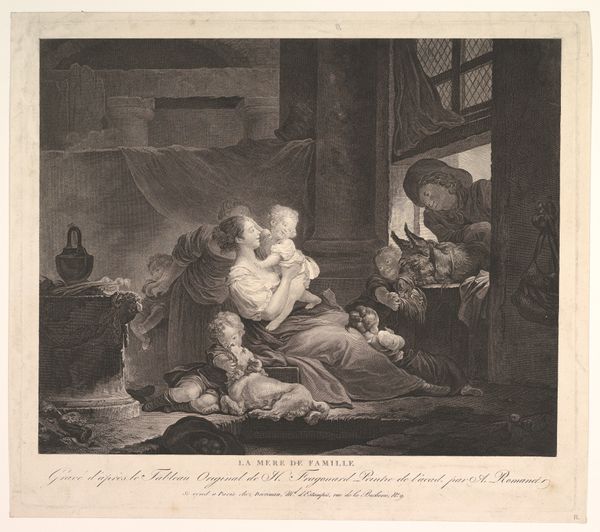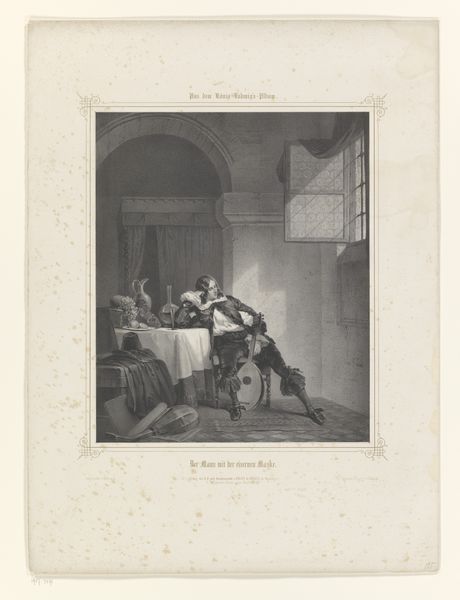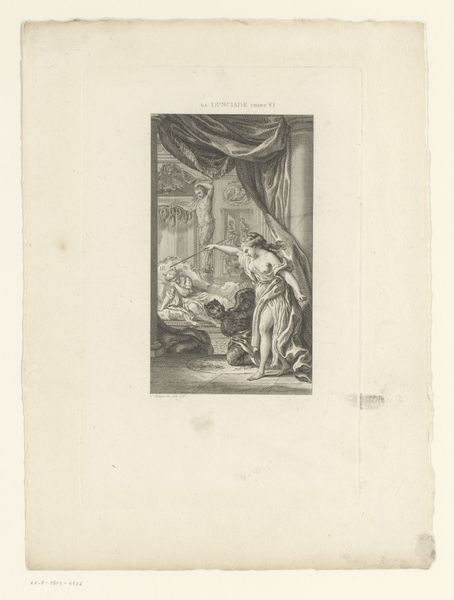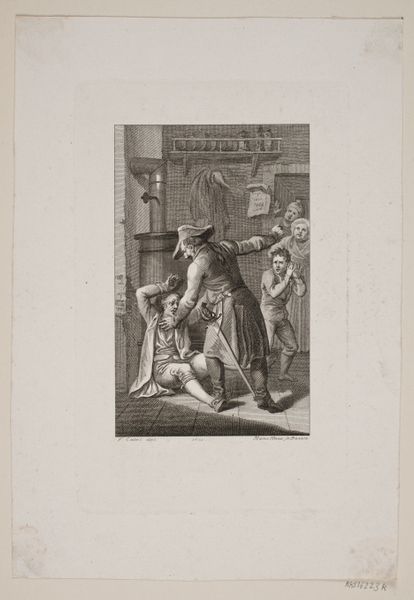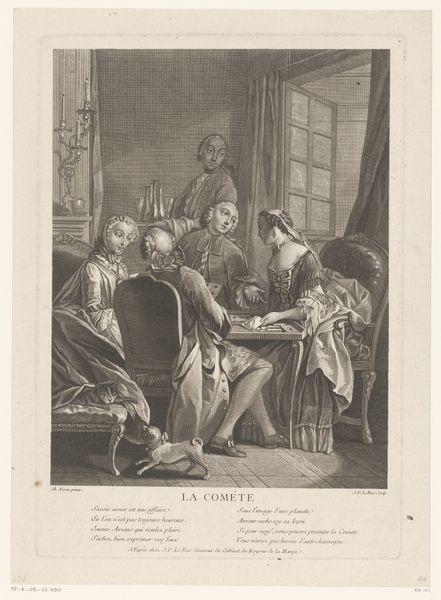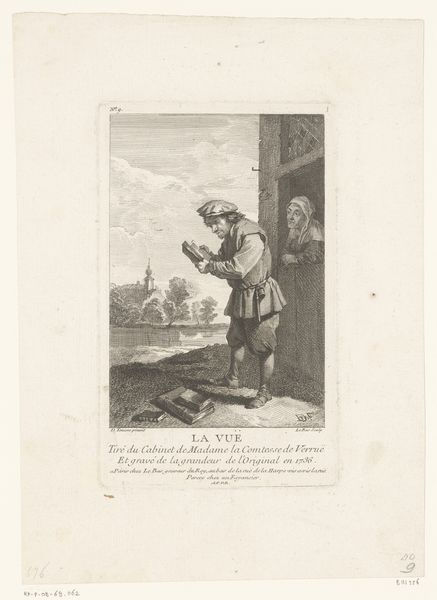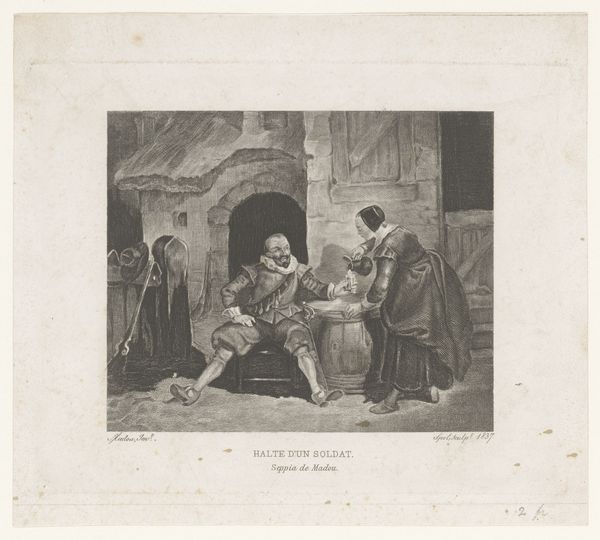
Dimensions: height 503 mm, width 370 mm
Copyright: Rijks Museum: Open Domain
Editor: Here we have Hendrik Dekker's engraving, "The Return of a Fisherman," created sometime between 1846 and 1863. The image is quite moving—the quiet intimacy of the mother and child juxtaposed against the vast sea and returning fisherman feels deeply symbolic. What do you see in this piece from a historical perspective? Curator: Well, the depiction of the returning fisherman hits at the heart of 19th century Romanticism’s engagement with labor. It focuses our attention on the role of fishermen in broader society and cultural imagination. It humanizes and idealizes their lifestyle to give us a sentimental look at the lower class, especially in this case given it’s displayed prominently for public viewing in a museum. The fishing community is shown as heroic. But, do you notice how this heroic man returns to an obviously impoverished setting? Editor: Yes, I do. There's a real tension there. Is the print meant to highlight those societal contradictions? Curator: Perhaps. Or, maybe, reconcile them. By placing it in a tradition of romanticizing the “simple life”, these genre paintings really just naturalize existing class hierarchies. The family is literally grounded to the earth, at the base of the work, with their humble door practically forcing them to remain. What’s your interpretation? Editor: That's fascinating. I initially saw only the intimate, idealized return, but the way the scene is staged absolutely highlights the economic realities. The positioning of the figures makes you rethink what you assumed upon first glance. Curator: Exactly! The museum setting itself plays a crucial role in shaping how we see this fisherman. Did you notice how it's not called the exhausted or working fisherman? “Thuiskomst” creates an appeal to home to invoke feelings that would then be transferred to their social superiors, perhaps to ask for financial assistance in the arts? Editor: That's a layer I hadn't considered. The title itself participates in framing the narrative for the audience, subtly guiding our emotional response within the political structures. This perspective has completely transformed my reading of the artwork; thanks for enlightening me. Curator: Likewise, I enjoyed dissecting this piece with you! Considering its position within our modern gaze really helps exemplify art’s ability to work for both the betterment and suppression of those rendered within it.
Comments
No comments
Be the first to comment and join the conversation on the ultimate creative platform.
